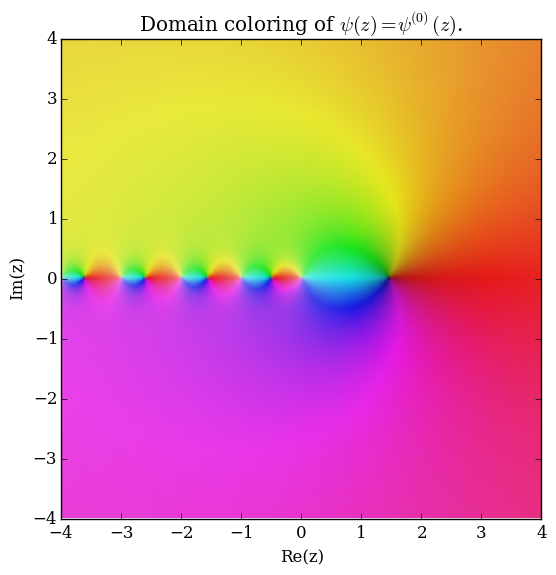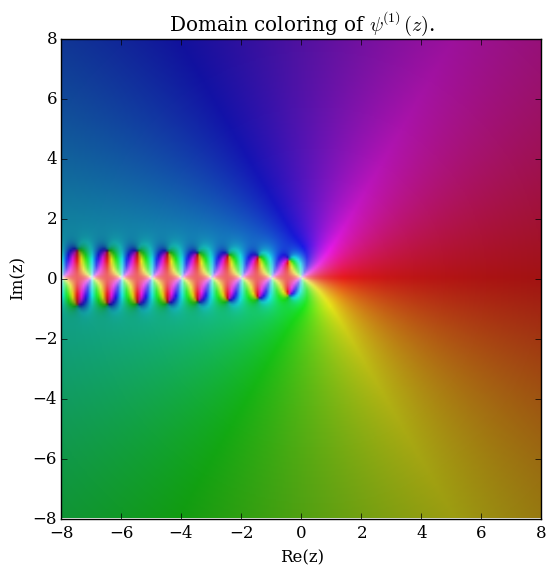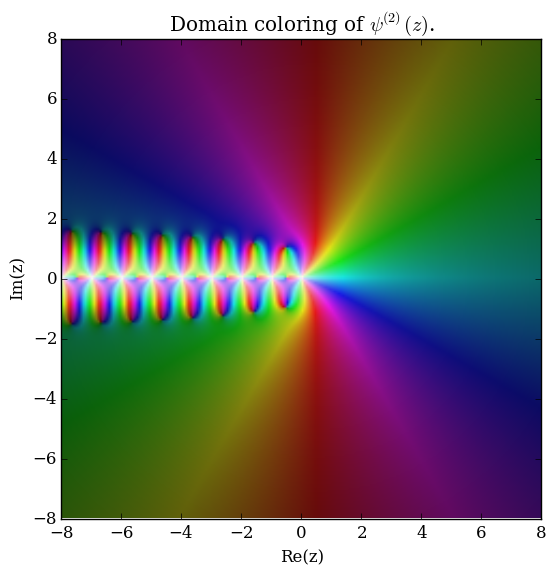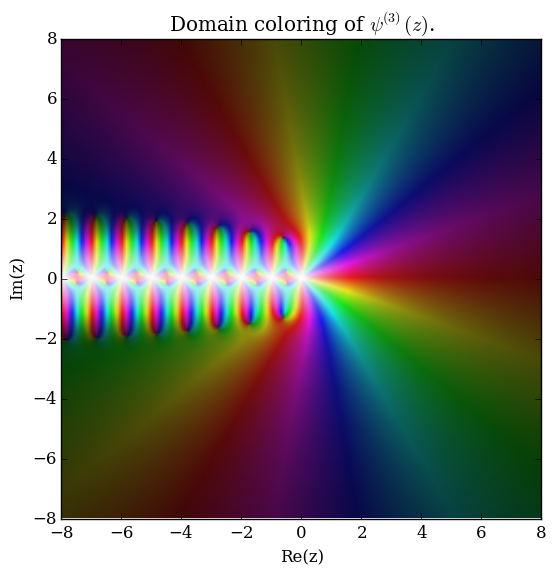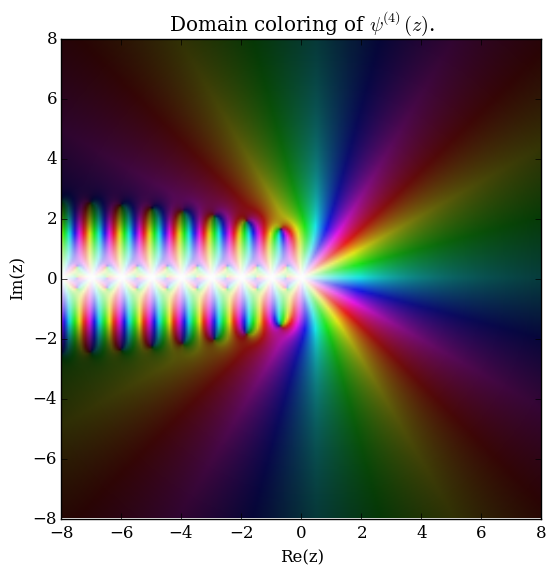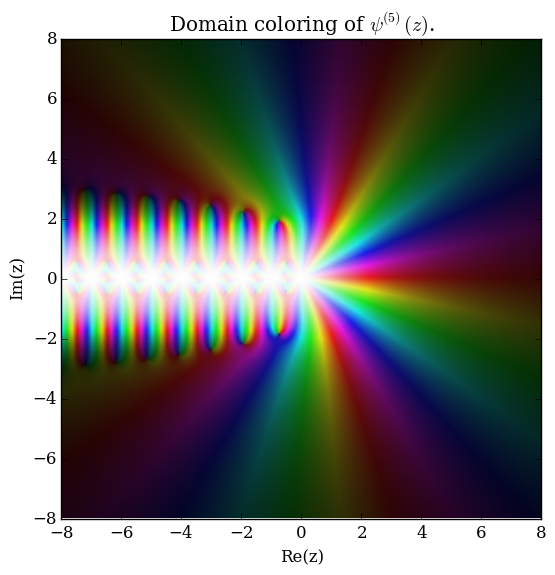Difference between revisions of "Polygamma"
From specialfunctionswiki
| Line 1: | Line 1: | ||
| − | The polygamma function of order $m$, $\psi^{(m)}(z)$, is defined by the formula | + | The polygamma function of order $m$, $\psi^{(m)}(z) \colon \mathbb{C} \setminus \{0,-1,-2,\ldots\} \rightarrow \mathbb{C}$, is defined by the formula |
$$\psi^{(m)}(z) = \dfrac{\mathrm{d}^{m+1}}{\mathrm{d}z^{m+1}} \log \Gamma(z),$$ | $$\psi^{(m)}(z) = \dfrac{\mathrm{d}^{m+1}}{\mathrm{d}z^{m+1}} \log \Gamma(z),$$ | ||
where $\log \Gamma$ denotes the [[loggamma]] function. The [[digamma]] function $\psi$ is the function $\psi^{(0)}(z)$ and the [[trigamma]] function is $\psi^{(1)}(z)$. | where $\log \Gamma$ denotes the [[loggamma]] function. The [[digamma]] function $\psi$ is the function $\psi^{(0)}(z)$ and the [[trigamma]] function is $\psi^{(1)}(z)$. | ||
| Line 25: | Line 25: | ||
[[Digamma]]<br /> | [[Digamma]]<br /> | ||
[[Trigamma]]<br /> | [[Trigamma]]<br /> | ||
| + | |||
| + | =References= | ||
| + | * {{BookReference|Handbook of mathematical functions|1964|Milton Abramowitz|author2=Irene A. Stegun|prev=findme|next=Integral representation of polygamma for Re(z) greater than 0}}: 6.4.1 | ||
[[Category:SpecialFunction]] | [[Category:SpecialFunction]] | ||
Revision as of 07:05, 11 June 2016
The polygamma function of order $m$, $\psi^{(m)}(z) \colon \mathbb{C} \setminus \{0,-1,-2,\ldots\} \rightarrow \mathbb{C}$, is defined by the formula $$\psi^{(m)}(z) = \dfrac{\mathrm{d}^{m+1}}{\mathrm{d}z^{m+1}} \log \Gamma(z),$$ where $\log \Gamma$ denotes the loggamma function. The digamma function $\psi$ is the function $\psi^{(0)}(z)$ and the trigamma function is $\psi^{(1)}(z)$.
Properties
Integral representation of polygamma
Integral representation of polygamma 2
Polygamma recurrence relation
Polygamma reflection relation
Polygamma series representation
Relation between polygamma and Hurwitz zeta
See Also
References
- 1964: Milton Abramowitz and Irene A. Stegun: Handbook of mathematical functions ... (previous) ... (next): 6.4.1
